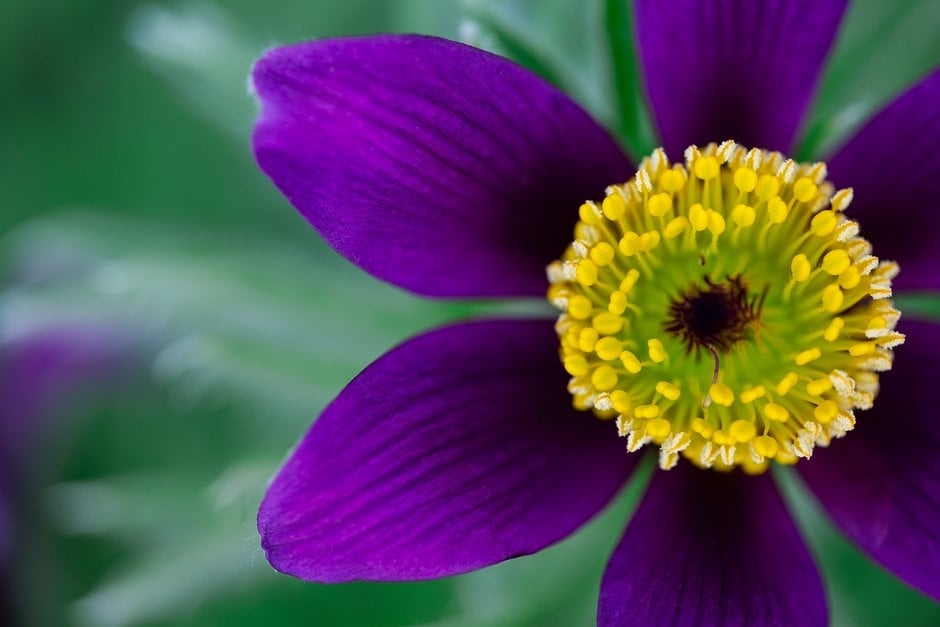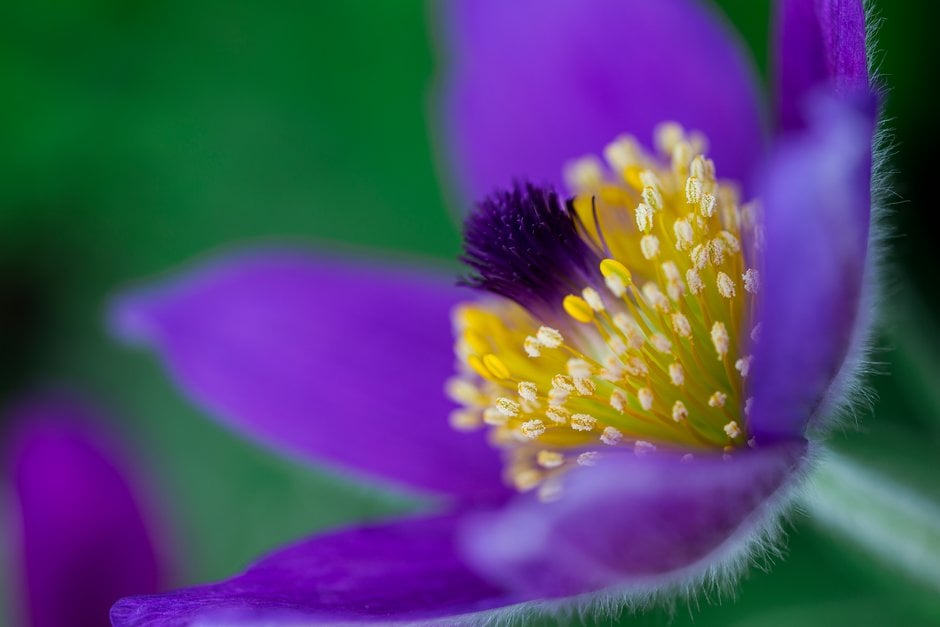Pulsatilla vulgaris
pasqueflower
A perennial to 20cm, forming a clump of finely dissected basal leaves, silky when young. Flowers 5-9cm in width, erect or nodding, violet, followed by silky fruiting heads
Other common names
April foolsbadgers
see moreblue money
blue tulip
cat's eyes
Coventry bells
Dane's blood
dream herb
Easter flower
flaw flower
flower of the wind
gosling
hart's horn plant
headache plant
meadow anemone
passeflower
Dane's flower
lion's beard
mayflower
prairie smoke
rock lily
Synonyms
Anemone pulsatillaSize
Ultimate height
0.1–0.5 metresTime to ultimate height
2–5 yearsUltimate spread
0.1–0.5 metresGrowing conditions
Moisture
Well–drainedpH
Acid, Alkaline, NeutralColour & scent
| Stem | Flower | Foliage | Fruit | |
| Spring | Purple | Green | ||
|---|---|---|---|---|
| Summer | Green | Grey Silver | ||
| Autumn | ||||
| Winter |
Position
- Full sun
Aspect
South–facing or North–facing or East–facing or West–facing
Exposure
Exposed or Sheltered Hardiness
H5Botanical details
- Family
- Ranunculaceae
- Native to GB / Ireland
- Yes
- Foliage
- Deciduous
- Habit
- Clump forming
- Potentially harmful
- Can cause mild stomach upset if ingested. Wear gloves and wash hands after handling
- Genus
Pulsatilla are herbaceous perennials forming clumps of finely dissected leaves, with solitary, hairy bell-shaped or cup-shaped flowers followed by silky-plumed seed-heads
- Name status
Correct
- Plant range
- Europe
How to grow
Cultivation
Grow in very well-drained soil in full sun; suitable for rock garden, scree or alpine bed. Resents disturbance and can be hard to establish
Propagation
Propagate by seed or take root cuttings in the winter
Suggested planting locations and garden types
- Patio and container plants
- Gravel garden
- Rock garden
Pruning
No pruning required
Pests
Slugs may eat the flowers
Diseases
Generally disease-free
Love gardening
Sign up to receive regular gardening tips, inspiration, offers and more
View our Privacy Policy
Get involved
The Royal Horticultural Society is the UK’s leading gardening charity. We aim to enrich everyone’s life through plants, and make the UK a greener and more beautiful place.

